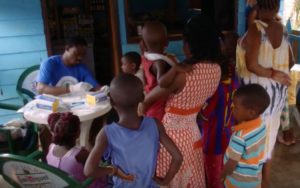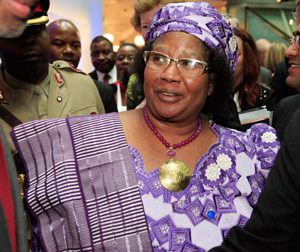Over 1,000 Feared Dead After Cyclone Slams Into Mozambique
Cyclone Idai could prove the deadliest storm in generations to hit the impoverished southeast African country of 30 million.JOHANNESBURG — More than 1,000 people were feared dead in Mozambique four days after a cyclone slammed into the country, submerging entire villages and leaving bodies floating in the floodwaters, the nation’s president said.
“It is a real disaster of great proportions,” President Filipe Nyusi said.
Cyclone Idai could prove to be the deadliest storm in generations to hit the impoverished southeast African country of 30 million people.
It hit Beira, an Indian Ocean port city of a half-million people, late Thursday and then moved inland to Zimbabwe and Malawi with strong winds and heavy rain. But it took days for the scope of the disaster to come into focus in Mozambique, which has a poor communication and transportation network and a corrupt and inefficient bureaucracy.
Speaking on state Radio Mozambique, Nyusi said that while the official death toll stood at 84, “It appears that we can register more than 1,000 deaths.”
U.N. agencies and the Red Cross helped rush emergency food and medicine by helicopter to the stricken countries.
Nyusi, who cut short a visit to neighboring Swaziland over the weekend because of the disaster, spoke after flying by helicopter over Beira and the rural Manica and Sofala provinces, where he reported widespread devastation.
“The waters of the Pungue and Buzi rivers overflowed, making whole villages disappear and isolating communities, and bodies are floating,” Nyusi said.
Emergency officials cautioned that while they expect the death toll to rise significantly, they have no way of knowing if it will reach the president’s estimate.
The Red Cross said 90 percent of Beira was damaged or destroyed. The cyclone knocked out electricity, shut down the airport and cut off access to the city by road.
The scale of the damage in Beira is “massive and horrifying,” said Jamie LeSueur, who led a Red Cross team that had to assess the damage by helicopter because of the flooded-out roads.
More than 215 people have been killed by the storm in the three countries, including 89 in Zimbabwe, according to official figures. And hundreds more were reported missing.
Mozambique is a long, narrow country with a 2,400-kilometer (1,500-mile) coastline along the Indian Ocean. It is prone to cyclones and tropical storms this time of year.
In 2000, Mozambique was hit by severe flooding caused by weeks of heavy rain, a disaster made much worse when a cyclone hit. Approximately 700 people were killed in what was regarded as the worst flooding in 50 years.
Mozambique won independence from Portugal in 1975 and then was plagued by a long-running civil war that ended in 1992. Its economy is dominated by agriculture, and its exports include prawns, cotton, cashews, sugar, coconuts and tropical hardwood timber.
More recently it has been exporting aluminum and electric power, and deposits of natural gas were discovered in the country’s north.
Your support matters…Independent journalism is under threat and overshadowed by heavily funded mainstream media.
You can help level the playing field. Become a member.
Your tax-deductible contribution keeps us digging beneath the headlines to give you thought-provoking, investigative reporting and analysis that unearths what's really happening- without compromise.
Give today to support our courageous, independent journalists.






You need to be a supporter to comment.
There are currently no responses to this article.
Be the first to respond.